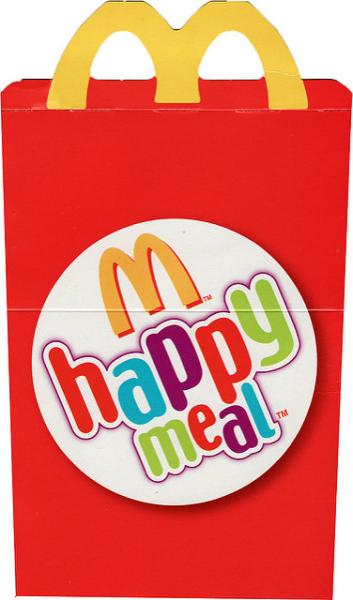The California State legislature has passed a new law, requiring kid’s meals to offer as
“the default beverage water, sparkling water, or flavored water, as specified, or unflavored milk or a nondairy milk alternative, as specified. The bill would not prohibit a restaurant’s ability to sell, or a customer’s ability to purchase, an alternative beverage if the purchaser requests one.”
So is this a nudge, a shove, or even necessary?
Some background
The Happy Meal is included in roughly 25% of purchases at McDonald's and has been the poster-boy in the war waged by advocates of “better” nutrition. In 2010, the Center for Science in the Public Interest (I suppose their name suggests there is another “science” in the private interest) accused McDonald’s of
“dangling toys in front of children … [To] mobilize “pester power,” but it also imprints on developing minds brand loyalty for McDonald’s. Because … eating Happy Meals promotes eating habits that are virtually assured to undermine children’s health.”
McDonald’s has yielded to political and cultural pressures and over the same period has undoubtedly improved the nutritional value of their offerings; including substituting fruit in place of French fries and most recently a vow to drop cheeseburgers entirely from Happy Meals. (At this time, the cheeseburger has vanished from advertising and store signage, but it still available on request.) McDonald’s also found that no good deed goes unpunished when Ernest Baskin, a professor of food marketing stated the reason for the changes were to improve their “image among parents and reducing costs of food.” (Emphasis added)
Left to market forces McDonald’s Happy Meals have 600 calories or less as an option and will be the default globally by 2022. But the California legislative concern is the beverage. For those driven by data, unlike the legislature, here are the calories.
|
Beverage [1] |
Calories |
|
Low Fat Milk |
100 |
|
Chocolate Milk |
170 |
|
Apple juice |
100 |
|
Coca-Cola, Sprite |
110 |
|
Diet Coca-Cola |
0 |
|
Hi C Orange Lavaburst |
120 |
|
Ice tea or water – still or sparkling |
0 |
|
Sweet tea |
90 |
So by requiring the default offering to be either water or milk, instead of juice or soda, calories will be reduced anywhere from zero (when the choices replace a diet soda or ice tea, though what child drinks ice tea?) to 120 calories if we are replacing High C Lavaburst. But the wary parent may be trapped, and by allowing their tyke chocolate milk they might wind up with 70 to 170 calories more.
Nudge or Shove?
The wording of the legislation provides a clue.
“By enacting this act, it is the intent of the Legislature to support parents’ efforts to feed their children nutritiously by ensuring healthy beverages are the default options in children’s meals in restaurants.”
So for parents of impressionable children, it is a nudge or perhaps a means to stiffen up their backbone when faced by a child’s pester power. But one man’s nudge is another’s shove. For the restaurants, and that includes all the fast-food choices, not merely McDonald’s it is a requirement and comes with financial penalties.
But the fast-food vendors are already there or will be there quite soon. They see the same handwriting on the wall; soda sales are down, our concern “for the children” is a constant, and childhood obesity is on the rise. And in reading the materials provided to the legislatures in making their voting decision, the health concern is the relationship of “poor nutritional habits” to obesity and in turn to chronic diseases. [2]
Now, these legislated regulations are in line with the American Academy of Pediatrician’s (AAP) recommendation to fight obesity, with at least one interesting exception. The AAP recommends an hour of physical activity a day; California State Law requires only 20 minutes a day for younger children and 40 minutes a day for adolescents. Why not treat this risk factor, a sedentary lifestyle? Could increasing physical activity in school, be too much of a nudge? It might require longer school days, and cost taxpayers money. Could it benefit all the children, rather than those eating fast-food? Isn't physical activity just as important a habit as your beverage choice?
Or is the passage of this legislation, requiring changes that marketing forces have already created itself a political marketing ploy, especially given mid-term elections in two months. What politician can resist batting Ronald McDonald and his ilk around, especially when they are protecting “the children.”
[2] Stephanie Winn a spokesperson for the American Cancer Society (ACS) stated “Some of these kids are drinking up to three sodas a day. This is setting them up for tremendous cancer risks down the road. Because now we know that 20 percent of all cancers are tied to being overweight.” There must have been a big change because according to the ACS website “According to research from the American Cancer Society, excess body weight is thought to be responsible for about 8% of all cancers in the United States…”




